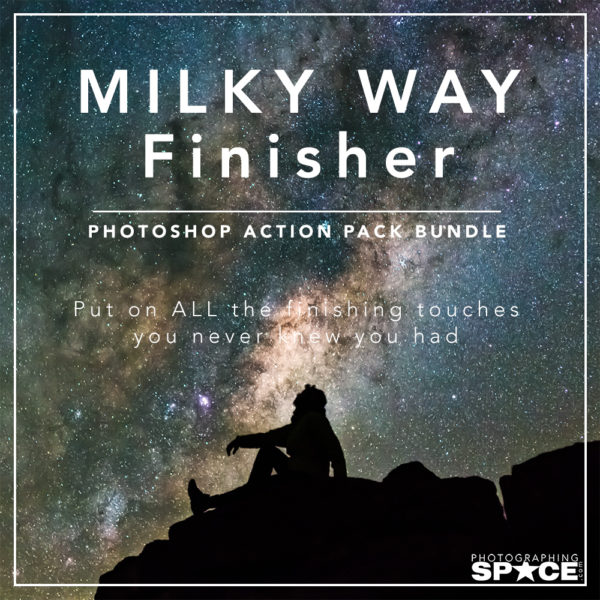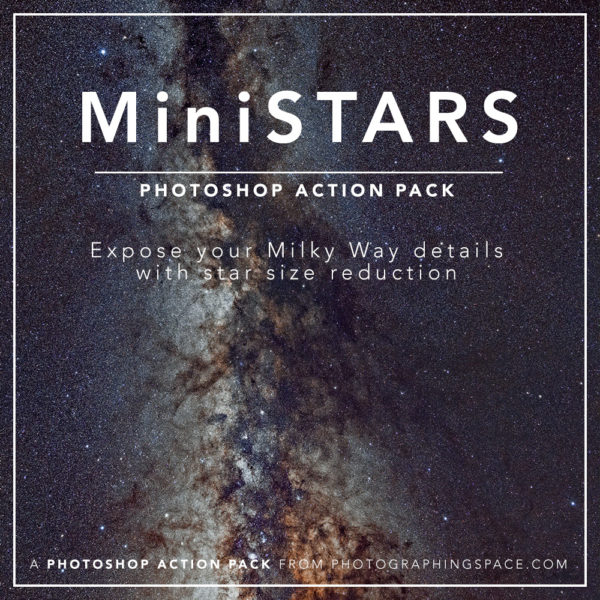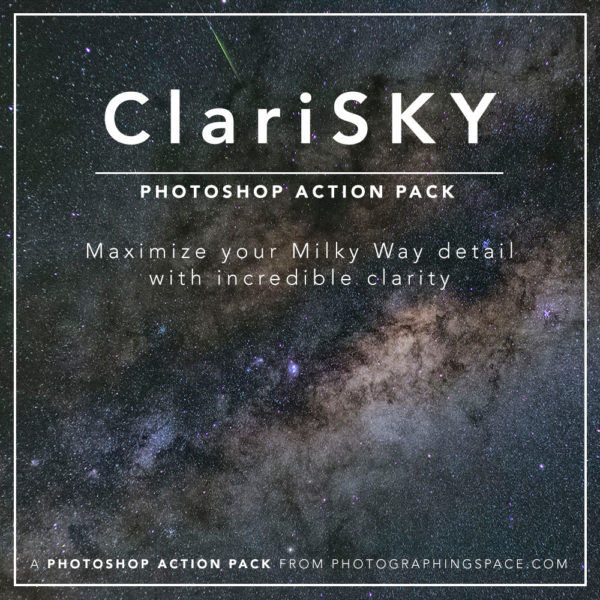It doesn’t sound too hard to do, right? Well, let’s just say it took me nearly a year to get it right.
I have always been fascinated by the night sky and have spent many hours in my life trying to capture it. It may seem easy to just point your camera at the sky and capture an image of it, but believe me it’s not always that effortless. We are travelling through space on planet earth at a speed of around 67,000 mph as well as rotating at close to 1000 mph, so the stars and the planets of the night sky are always on the move.
In early 2012, I came up with the idea of capturing the moon rising behind a lookout in my city of Wellington, New Zealand. The cool thing about this idea was that there are usually people up on the lookout both day and night, and if I could time it perfectly and find the right position to photograph from, I thought I might be able to capture their silhouettes against the rising moon. So why did it take me so long, and how did I go about finally getting a successful shot?

My first attempts
I’d seen the moon rise above the lookout many times before, so I though all I had to do was find the right spot the night before and then go back to shoot from that spot the next night. As I quickly found out, the moon’s position and timing changed from day to day, so the night I tried to shoot it, the moon no longer rose behind the lookout. I tried all kinds of different things, with lots of research online to calculate where I needed to stand to get the shot, but kept failing month after month – I really needed something simple but accurate to plan my shots with, and I wanted to be able to take it out in the field with me, so I could adjust my positioning perfectly on the go, in relation to where the moon was to rise.
The breakthrough
Finally I came across an app called PhotoPills that potentially could be what I was looking for. It was much more user friendly than some of the other apps and software that I tried, and also had other great features built in, including a really powerful planner that calculates where the sun or moon will be for all possible dates and from any given position. You can also save your plans and share on social networks or via email straight from the app, and PhotoPills even has 3D augmented reality viewers built in so you can visualise the path of the sun or moon though your phone’s camera. That isn’t all though – there’s a time lapse calculator, equivalent long exposures, DoF, FoV, a star trails simulator, and an exposure time calculator to use when you want to prevent star trails in your images. I instantly fell in love with this app and now use it all the time in planning all of my astrophotography shoots. So what’s involved in getting a shot like my winning Astronomy Photographer of the Year Moon Silhouettes image? Well it all starts with planning…

The perfect plan
As I have learnt many times over, to capture good astro photos you usually need to plan the shot. Sure you can head out one night and just get lucky with a good shot, but I find that if I’m not prepared, I usually rush to set up the shot, and make simple mistakes that could have been avoided if I had taken the time to plan. It took me over a year to capture the moon shot I was after, and that included a lot of trial and error – and planning.

So how did I plan for my Moon Silhouettes shot?
Well, first of all I had a location in mind and a technique that I wanted to use, so the moon would appear large enough behind the silhouettes on the lookout. The technique was to use a super telephoto lens and shooting in a position a few kilometres away from the people on the lookout. By doing this, the moon would look large in the frame, as you are using pretty much the lens equivalent of a small telescope, and the people would appear relatively small, as you are so far away from them. I borrowed a Canon EF 800mm, onto which I attached a Canon 1.4x extender, giving me a focal length of 1120mm. That gave me enough magnification to pull off the large moon, small people technique. All I had to do now was find the right location far enough away from – and in line of sight of – the lookout, and work out at exactly what time and position the moon would rise behind the people on the lookout.
PhotoPills is my friend

Working all of this out may sound quite complicated and difficult, but with the PhotoPills app, all it takes is a few short steps and you can get an accurate position and plan together. Firstly I had to pick the best day for my moon rise. I wanted it as close as possible to full moon, but I also needed it to be dark enough so I would get a black sky as well as people silhouettes and a bright yellow moon. Weather also played a big part as I wanted no cloud on the horizon, nor any wind as the slightest lens shake at that focal length and magnification will ruin your shot.
First I went to my PhotoPills app to find the correct moon phase. I could see that my next best chance was the full moon was on 27 March, but because the moon rose just before sunset that day, the sky would not be dark enough to get the silhouettes against the moon. So I chose the night of 28 March, as the moon rose after sunset and it was dark enough to get my silhouettes. The other advantage for me on this day was that the weather was forecast to be clear with little wind which was essential in pulling off this shot.
Next up I needed to find the location I was going to shoot the photo from. The location had to have a good line of sight of the lookout, and it also had to be in the correct position for the moon to rise exactly behind it, silhouetting the people. Great accuracy is necessary for this as you only need to be a meter or two out and you will miss the perfect positioning of the moon. PhotoPills will give you this accuracy, and on the day it even gives you your position by way of a blue dot so you can walk and line up perfectly with the spot you need to be in to get the shot.
Planning the PhotoPills way:
Left – the PhotoPills menu page.
Centre – the Moon phase calender.
Right – red pin is where I am photographing the Moon Silhouettes shot from, and the black pin is where the people on the lookout are.
So I have my position for taking the shot, but the other thing I must take into consideration is altitude of the lookout in relation to my position. I need to know this because even though PhotoPills tells me moon rise is at 7.31pm, I won’t see the moon until a little later since from my vantage point the lookout is much higher. This is where PhotoPills and it’s geodetic information comes in handy, because I can simply move the geodetic pin to where the people are on the lookout. This will not only tell me the altitude of the lookout but also the difference in altitude and degrees of my vantage point to the lookout.
Now with all of this information plugged in, it’s easy for me to use PhotoPills to tell me exactly what time and where I will first start to see the moon rise from my vantage point. I simply scrub through the timeline and as I get past the time of moon rise, I will see a dotted blue line appear on the screen. This tells me that even though the moon is already rising on the horizon, I won’t see it from my vantage point until the dotted line becomes a solid line. This is where PhotoPills is really powerful and I can work out the perfect position and composition for my moon shot.
A real world example
Below are some screenshots of my PhotoPills plan for capturing my ‘Moon Silhouettes‘ shot. I have already found my position to shoot the image from as discussed earlier on. My position is 2.1km from the lookout, so with that kind of distance you can see how important accuracy is.
In the first screenshot below, the thick blue line represents the direction of moon rise from my vantage point. The moon will begin to rise at 7.31pm, but I won’t see it at that point as I am located much lower than the lookout. The black pin is the geodetic pin and is centred on the lookout where the people are standing. As you can see PhotoPills tells me the altitude of the lookout is 179m, and that the difference in height between my vantage point and the lookout is 115m or 3.1 degrees.
The dotted blue line represents the direction of the moon from my vantage point as it rises. When it is dotted, it means that the moon is not visible to me, but the instant it becomes a solid blue line like in the second screen capture at 7.51pm, I will see the moon beginning to rise over the lookout.
Now I worked out by watching the moon rise the day before, that it takes close to 2 minutes from the first moment I see the moon rising behind the lookout, until it is high enough to silhouette the people and give me a good composition. You can see this in the third screen capture at 7.53pm which is the exact moment I took my final Moon Silhouettes photo.

I never get tired of photographing the sun, moon and stars. It can be challenging and this is where planning plays a big part. I never forget those moments when I finally do nail a shot like Moon Silhouettes. It puts me on a natural high knowing that I’ve successfully captured what I had imagined in my mind. PhotoPills is an invaluable tool which I use every time I plan a shoot, and I have only just shown you a small part of what the app can do for you in your planning. Go check PhotoPills out on the web and make sure you watch some of their great tutorial videos.








So, at the end, all was about getting that app, that I suppose it´s not cheap. I thing what readers want to know is the photographic technique you used at the moment you have the moon there, not how to use Photopills.
Hi Greg,
Thanks for your comment — let me expand on Mark’s article a little.
It’s not just about getting the app, it’s really about the process. The settings of the camera, the lens used, are important, but the planning of this type of shot is what’s really important, and that’s where the app is helpful. Can you do it without the app? Sure, but it’s harder and takes a little more manual research. The app makes it easier. One thing I’ve found about many of these advanced photography techniques is knowing the right tools for the job — and that includes apps and processing!
I’ve done this type of shot before as well, and it took me several days to plan it. I used PhotoPills for it as well, because it made things so easy — and for the features it offers, I feel the app is cheap compared to the time it saves. But that’s just my opinion…
(Neither Mark nor I make any money from PhotoPills, it’s just a tool we both happen to believe in!)
Cheers!
Cory
Everywhere else on the internet he says that he used a 500mm lens with 1.4 TC on a 1.3x crop 1Dx for a total effective length of 1200mm. Here he says,”Canon EF 800mm f/4 with extender, for a focal length of 1120mm. He spent a year working on this shot and he doesn’t remember what lens he used? Way to bs your readers! Or, perhaps Mark WASN’T the author of this marketing piece?
Correction, should read, “a 500mm lens with 1.4 TC on a 1.3x crop 1Dx for a total effective length of 1300mm.”
Hi Dmitri,
Like I said, I will speak with Mark and correct the article if need be.
Cheers,
Cory
Hi Dmitri,
This is not a marketing piece. I will speak with Mark to make sure it’s correct, and update the article here if it needs to be. Mark was indeed the author. Mistakes happen, and can be corrected if need be, please be understanding of that.
Cheers,
Cory
Hi Dmitri,
I’ve spoken with Mark and he’s clarified the article as being correct.
His words:
“[…] the article is correct. I shot the original video with a 500mm + 2x extender, but the shot the image as seen in the article, a few months later with a 800mm + 1.4x extender. A lot of people get the video and image confused thinking they are from the same shoot, but they’re not.”
Cheers,
Cory
Hi Cory,
Thank you for clearing the confusion and sorry for rushing in with harsh remarks. Please accept my apologies. Happy shooting!
Best,
Dmitri
I guess what really threw me off was that the author claimed to have used a Canon EF 800mm f/4 — the lens that doesn’t exist. But now I see that it must have been an honest mistake and not an attempt to send would-be imitators on a wild goose chase 🙂
Hi Dmitri,
No worries, I can understand the confusion. I’ve updated the article to remove the “f/4”, so that someone else also doesn’t get confused about the same thing.
I think a major takeaway from this is that you don’t need the same lens that Mark used, but you need a long focal length to get both subjects (humans/moon) at a good relative size.
Thanks for the note, and good luck. I’ve done this kind of shoot once, and it’s a huge rush when you get it right!
Cheers,
Cory
Oh my PhotoPills sounds elaborate, then again the results seems pretty accurate. Thanks for sharing your find!
PhotoPills is a great app. It is easy to use for simple things at first, but the uses and complexity can grow as well. It’s a one time fee of $10-15 and I have used it for several years. Also has a huge library of articles and videos on how to use it….. but also about how to be a good photographer. Try it.
It has taken me 3 years and I still haven’t got it. Thanks for the PhotoPills tip… this is just what I have been looking for.
PS: I left you a small beer as a tip. (I’m retired so I can’t afford a lot)